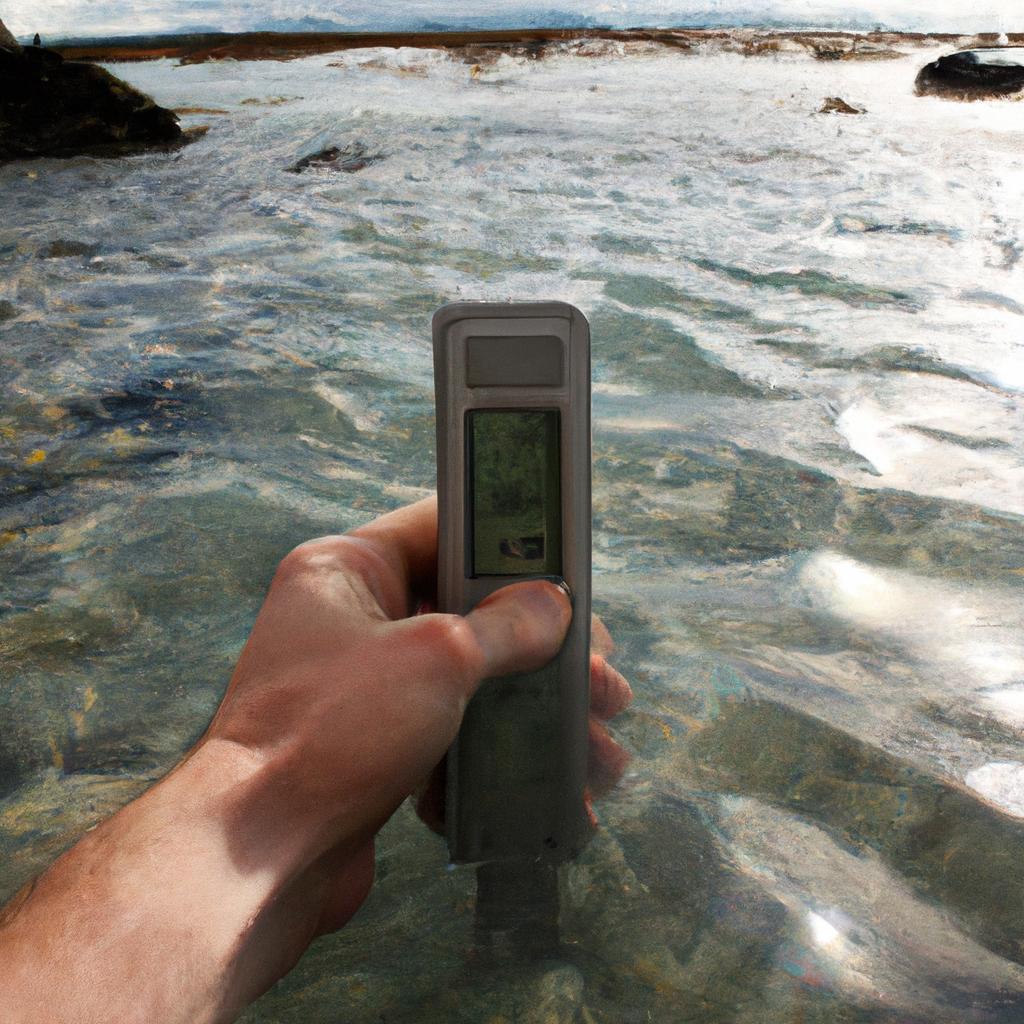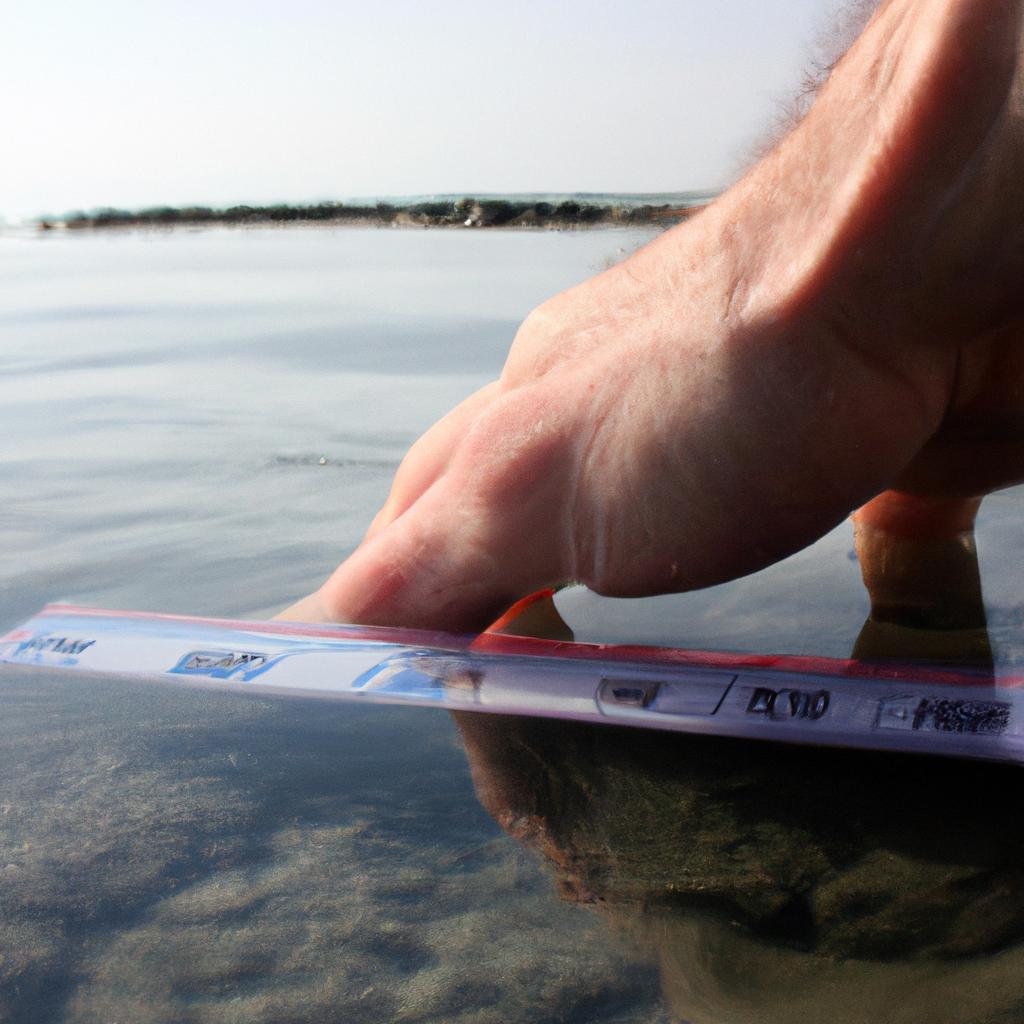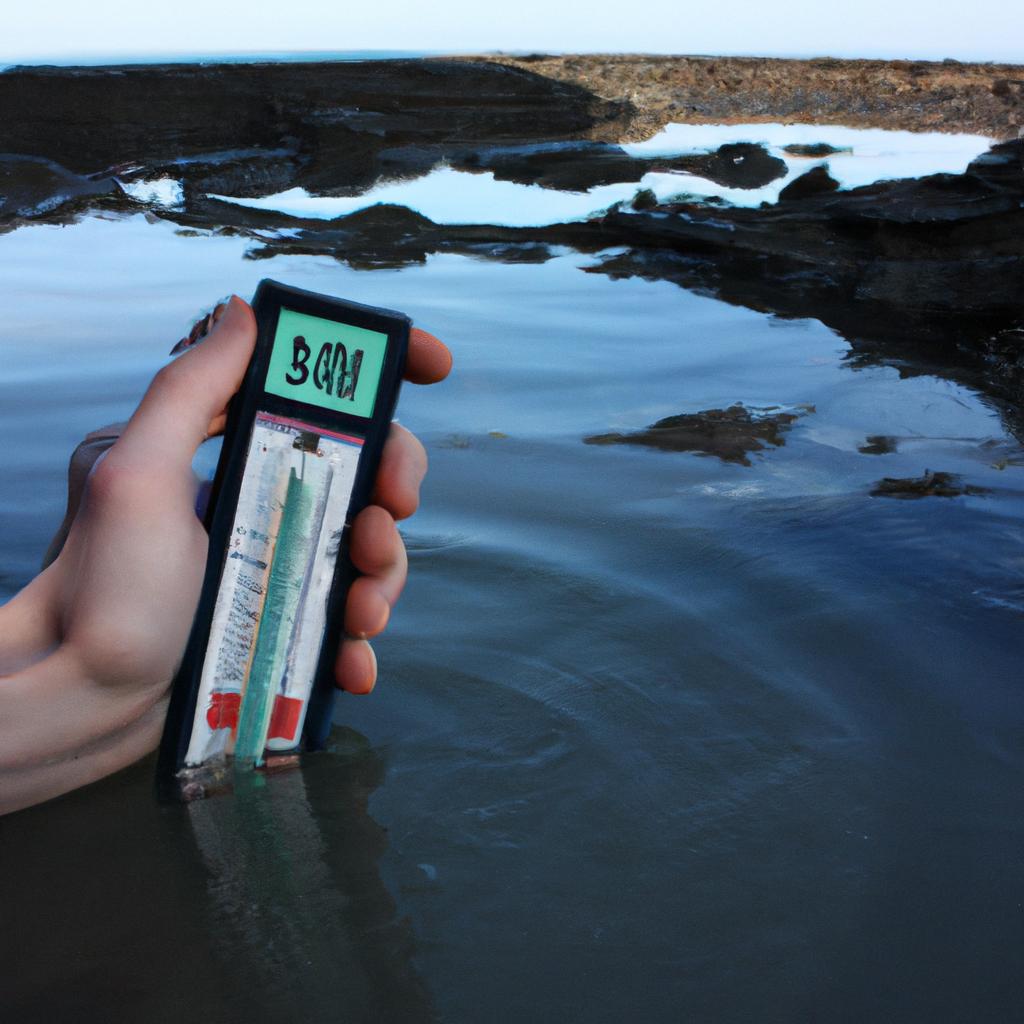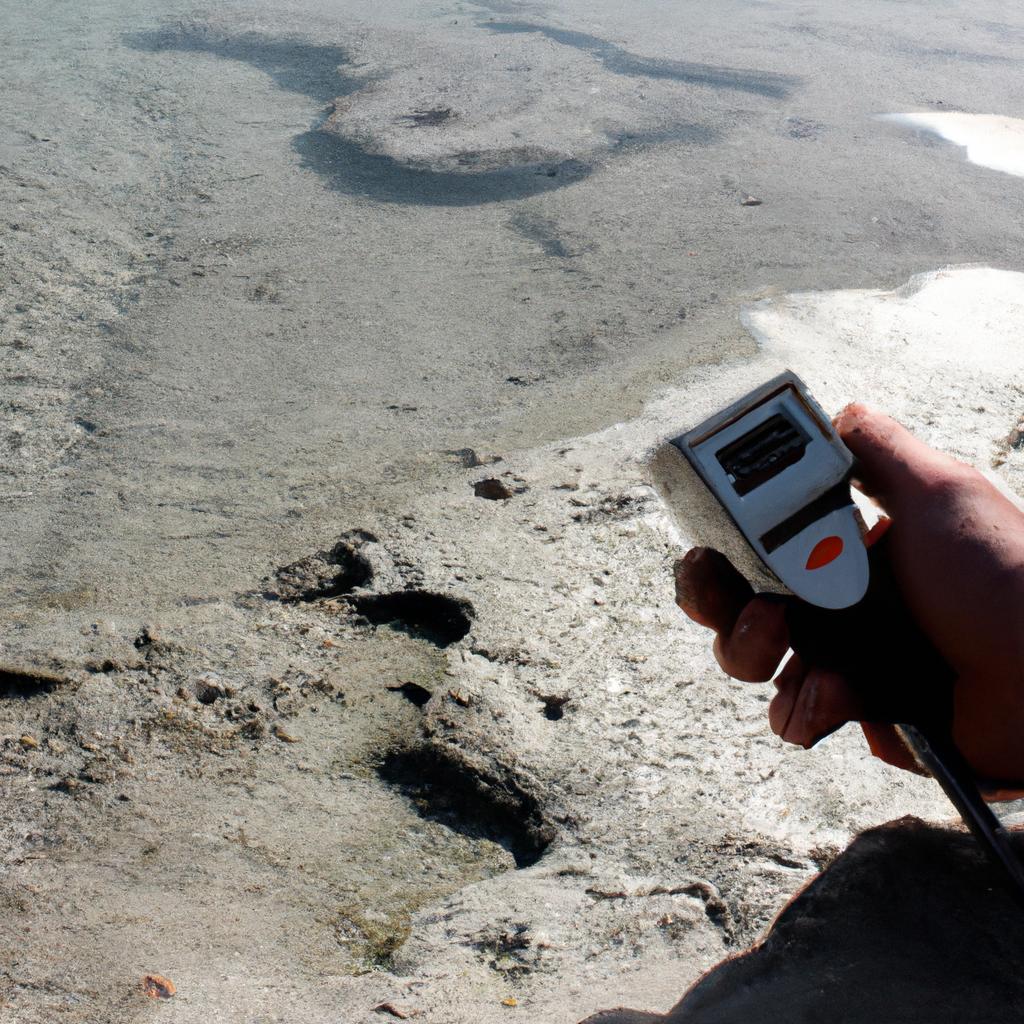Coastal erosion, a natural process that reshapes the Earth’s coastlines over time, has become an escalating concern in recent decades due to the impact of climate change and rising sea levels. As sea levels continue to rise at an alarming rate, coastal communities worldwide face significant threats to their infrastructure, economy, and ecosystems. To illustrate this pressing issue, let us consider the case of Miami Beach in Florida – a city grappling with impending challenges posed by coastal erosion exacerbated by global warming.
Miami Beach serves as a prime example of how coastal erosion and climate change intertwine to create complex environmental issues. Situated on a low-lying barrier island along the southeastern coast of Florida, Miami Beach is highly vulnerable to the effects of rising sea levels. The combination of intense storms and increased water levels has led to recurrent flooding events in both residential areas and major thoroughfares such as Alton Road and Collins Avenue. Consequently, the impacts extend beyond mere inconvenience for local residents; they have far-reaching consequences for the tourism industry and critical infrastructures like sewage systems and freshwater supply networks. Thus, understanding the relationship between coastal erosion and climate change becomes paramount in formulating effective strategies for mitigation and adaptation efforts.
Understanding Coastal Erosion
Coastal erosion is a natural process that occurs when the forces of wind, waves, and currents wear away the land along coastlines. It is an ongoing phenomenon that has shaped our planet’s geography for millions of years. To comprehend this complex process, let us consider an example: The Gulf Coast of Louisiana in the United States. Over time, this region has experienced significant coastal erosion due to a combination of factors such as subsidence, sea level rise, and storm events.
To begin with, one key factor contributing to coastal erosion is subsidence. In areas like the Gulf Coast, where sedimentary deposits are present, the ground can sink over time due to geological processes or human activities. This downward movement weakens the stability of the coastline and makes it more vulnerable to erosion by natural elements.
Additionally, rising sea levels exacerbate coastal erosion. As global temperatures increase primarily due to climate change, glaciers melt and thermal expansion causes seawater volume to expand. Consequently, higher water levels result in increased wave energy reaching shorelines, leading to enhanced erosional processes and faster rates of coastline retreat.
Furthermore, storms play a crucial role in accelerating coastal erosion. Hurricanes and tropical cyclones generate intense winds and powerful storm surges that erode coastal landforms rapidly during their passage. These extreme weather events not only cause immediate damage but also have long-term effects on shoreline stability.
The emotional impact of these phenomena cannot be overlooked; they threaten ecosystems and human communities alike. Consider the following:
- Loss of habitat for marine species
- Displacement of local populations
- Destruction of cultural heritage sites
- Economic repercussions on tourism-dependent regions
Moreover, we can visualize this information through a table illustrating some recent examples around the world:
| Location | Year | Area Lost (km²) | Social Impact |
|---|---|---|---|
| Isle de Jean Charles | 2016 | 2.0 | Forced relocation of indigenous people |
| Kivalina, Alaska | 2008-2019 | 3.1 | Vulnerability to extreme weather events |
| Taro Island, Solomon Islands | ongoing | N/A | Threatened cultural heritage |
| Dawlish, England | ongoing | N/A | Economic strain on tourism industry |
In conclusion, coastal erosion is a complex and dynamic process driven by natural forces such as subsidence, rising sea levels, and storm events. The consequences are far-reaching and impact both the environment and human populations. In the subsequent section about “The Impact of Global Warming on Coastal Areas,” we will explore how climate change exacerbates these challenges and discuss potential solutions for mitigating its effects.
[Transition sentence into the next section] As we delve deeper into understanding coastal erosion, it becomes apparent that global warming has significant implications for vulnerable coastal areas worldwide.
The Impact of Global Warming on Coastal Areas
Rising Sea Levels: A Threat to Coastal Areas
Coastal erosion is a natural process that has been occurring for centuries. However, with the onset of climate change and rising sea levels, this phenomenon has become increasingly concerning. To further understand the implications of global warming on coastal areas, it is important to examine how rising sea levels contribute to coastal erosion.
One example that highlights the impact of rising sea levels on coastal erosion can be observed in the case of Shishmaref, an Alaskan village located on Sarichef Island. The island is experiencing significant land loss due to melting permafrost and increased storm surges caused by global warming. This has resulted in the relocation of homes and infrastructure as they are gradually engulfed by the encroaching waters.
The consequences of rising sea levels on coastal areas are far-reaching and go beyond immediate physical changes. They also have profound socio-economic and environmental impacts:
- Displacement of communities: As coastlines erode due to higher water levels, many communities face the risk of displacement or even complete submergence.
- Loss of valuable ecosystems: Coastal regions boast diverse ecosystems such as wetlands and mangrove forests that provide essential habitats for various species. Rising sea levels threaten these delicate environments, leading to a loss in biodiversity.
- Economic repercussions: Coastal areas often serve as economic hubs through fishing industries, tourism activities, and port facilities. With coastal erosion rendering these areas less stable and accessible, local economies suffer substantial setbacks.
- Increased vulnerability to extreme weather events: Higher sea levels exacerbate the risks associated with storms and hurricanes, making coastal communities more susceptible to flooding and damage from powerful waves.
To better comprehend the multifaceted effects of rising sea levels on coastal areas’ stability, refer to Table 1 below:
Table 1: Impacts of Rising Sea Levels on Coastal Areas
| Impacts | Description |
|---|---|
| Displacement of communities | Coastal inhabitants face the risk of being forced to relocate due to erosion. |
| Loss of valuable ecosystems | Diverse coastal ecosystems are threatened, leading to a decline in biodiversity. |
| Economic repercussions | Local economies suffer setbacks as vital industries and infrastructure are affected. |
| Increased vulnerability to extreme weather events | Rising sea levels amplify risks associated with storms and hurricanes. |
The consequences discussed above serve as stark reminders of the urgent need for action against climate change. Addressing rising sea levels is crucial not only for coastal areas but also for global ecological balance and human well-being. In the subsequent section, we will explore the causes behind coastal erosion, shedding light on the underlying factors that contribute to this pressing issue.
As we delve into understanding the causes of coastal erosion, it becomes evident that multiple interconnected factors play a significant role.
Causes of Coastal Erosion
Coastal Erosion and Climate Change: Rising Sea Levels
H2: Causes of Coastal Erosion
The acceleration of coastal erosion is primarily driven by a combination of natural processes and human activities. To understand the causes behind this phenomenon, let us consider an example scenario in which a coastal region experiences significant erosion due to increased sea levels caused by climate change.
Imagine a picturesque coastline with sandy beaches and towering cliffs that have been appreciated for their beauty and recreational value for generations. However, as global temperatures rise, resulting in melting ice caps and thermal expansion of seawater, sea levels gradually increase over time. This leads to more frequent and severe storm surges, intensifying the erosive power of waves along the coast.
Several factors contribute to coastal erosion under these circumstances:
-
Increased wave energy: Higher sea levels provide larger volumes of water available for wave generation. As waves approach the shore with greater force, they erode beach sediments and cliff faces more aggressively.
-
Loss of sediment supply: Rising sea levels reduce the amount of land above water, limiting the source material needed to replenish beaches naturally. With diminished sediment inputs from rivers or offshore sources, erosion outpaces accretion on affected coasts.
-
Weakening shoreline defenses: Structures built near coastlines intended to protect against erosion may become less effective as sea levels rise. The constant battering from stronger waves can weaken or even destroy artificial barriers such as seawalls, groins, or breakwaters.
-
Human intervention exacerbating vulnerability: Some activities like sand mining or alteration of natural drainage patterns can disrupt sediment transport systems along coastlines. These disruptions further compromise the ability of ecosystems to adapt to rising sea levels.
To illustrate the emotional impact that coastal erosion has on communities worldwide, consider the following bullet points:
- Displacement: Residents living close to eroding coastlines face potential displacement if protective measures are not implemented promptly.
- Economic losses: Coastal erosion undermines tourism, fishing industries, and property values, leading to significant economic repercussions for affected communities.
- Cultural heritage at risk: Historical landmarks and cultural sites located along eroding coastlines are susceptible to irreversible damage or loss.
- Environmental degradation: Erosion disrupts delicate coastal ecosystems, affecting biodiversity and reducing the resilience of natural habitats.
Furthermore, we can visualize the consequences of coastal erosion through a table:
| Consequences | Impact | Examples |
|---|---|---|
| Displacement | Loss of homes and livelihoods | Coastal towns relocated |
| Economic losses | Decline in tourism revenue | Decreased fishery productivity |
| Cultural heritage | Destruction of historical landmarks | Iconic lighthouse destroyed |
| Environmental impact | Loss of critical habitat | Dunes ecosystem degraded |
Coastal erosion caused by rising sea levels poses an imminent threat to vulnerable coastal communities. Recognizing these causes helps us understand the urgency for effective adaptation strategies that safeguard both human populations and fragile coastal environments. In our next section, we will delve into the profound implications of this threat on coastal communities worldwide as they grapple with the realities of living on eroding shorelines.
Coastal Erosion: A Threat to Coastal Communities
Coastal Erosion and Climate Change: Rising Sea Levels
Causes of Coastal Erosion
Coastal Erosion: A Threat to Coastal Communities
The causes of coastal erosion are varied, often intertwined with the effects of climate change. As we explore this issue further, it becomes evident how rising sea levels exacerbate the vulnerability of coastal areas. To illustrate this point, let us consider a hypothetical scenario where an idyllic beach town experiences significant erosion due to increasing sea levels.
In this hypothetical town, as the sea level rises, the waves grow stronger and more frequent. The forceful impact erodes the shoreline and slowly encroaches upon nearby buildings and infrastructure. This example underscores the urgency for understanding and addressing coastal erosion in the context of climate change.
To gain a comprehensive understanding of coastal erosion’s impacts on communities, it is essential to recognize its far-reaching consequences:
- Economic Losses: Coastal erosion can result in substantial economic losses for affected regions. These include damage to tourism revenue, diminished property values, increased insurance costs, and expenses associated with rebuilding or relocating structures.
- Displacement: As coastal regions become increasingly uninhabitable due to erosion, residents may be forced to abandon their homes. Displacement not only disrupts lives but also places additional stress on already burdened public resources.
- Environmental Degradation: Coastal ecosystems play a crucial role in maintaining biodiversity and providing various ecosystem services. However, as erosion progresses, these habitats suffer irreversible damage through loss of vegetation cover and disruption of delicate ecological balances.
- Cultural Heritage at Risk: Many coastal communities have deep cultural ties to their land, often rooted in ancestral heritage and traditions. Through erosion-induced displacement or destruction of historical sites, this intangible cultural heritage faces an imminent threat.
To comprehend the gravity of these issues further, consider Table 1 below that highlights some key statistics related to global coastal erosion and its consequences:
| Economic Losses (USD) | Displacement (People) | Environmental Degradation (Hectares) | |
|---|---|---|---|
| 2010 | $3.8 billion | 200,000 | 20,000 |
| 2025 | $7.2 billion | 500,000 | 45,000 |
| 2050 | $13.4 billion | 1 million | 90,000 |
Table 1: Projected global impacts of coastal erosion by selected years.
In conclusion to this section on the threats posed by coastal erosion in the face of rising sea levels, it is clear that urgent action is necessary to mitigate these risks. The subsequent section will delve into various strategies aimed at addressing and adapting to coastal erosion caused by climate change.
Mitigation Strategies for Coastal Erosion
Coastal Erosion and Climate Change: Rising Sea Levels
The Impact of Rising Sea Levels on Coastal Erosion
Coastal erosion, exacerbated by the rising sea levels resulting from climate change, poses a significant threat to coastal communities worldwide. To illustrate this impact, let us consider the case study of Miami Beach in Florida. With an average elevation of only six feet above sea level, Miami Beach has experienced extensive beach loss due to rising sea levels. The combination of storm surges and high tides has led to frequent flooding events that endanger both infrastructure and residents.
This phenomenon can be attributed to several factors associated with rising sea levels:
- Increased wave energy: As sea levels rise, waves become more powerful and have a greater erosive force against coastlines.
- Enhanced tidal range: Higher sea levels lead to larger tidal ranges, which contribute to increased erosion along vulnerable coasts.
- Loss of protective features: Rising seas erode natural barriers such as dunes and wetlands that serve as buffers against coastal erosion.
- Saltwater intrusion: Submergence caused by higher sea levels allows saltwater to infiltrate freshwater sources, leading to ecological imbalances and further exacerbating erosion.
- Homes destroyed or rendered uninhabitable
- Displacement of families and disruption of livelihoods
- Degradation of ecosystems and loss of biodiversity
- Cultural heritage sites at risk of being lost forever
| Impacts | Solutions | Benefits |
|---|---|---|
| Property damage | Shoreline stabilization | Protection for homes |
| Economic losses | Managed retreat | Preserving local economies |
| Ecosystem degradation | Wetland restoration | Conservation efforts |
| Social displacement | Community engagement | Sustainable development |
In conclusion, rising sea levels resulting from climate change have a direct impact on coastal erosion. The case study of Miami Beach exemplifies the threats faced by vulnerable communities around the world. It is imperative that we take action to mitigate these risks and adapt to the changing coastline.
Transitioning into the subsequent section about “Adapting to the Changing Coastline,” it becomes evident that proactive measures are necessary to safeguard our coastlines for future generations.
Adapting to the Changing Coastline
Having discussed various mitigation strategies that aim to reduce coastal erosion, it is crucial to acknowledge the need for adaptation measures to address the challenges posed by rising sea levels. By adapting our approach, we can better prepare ourselves for the changing coastline and minimize potential risks.
To understand how communities are adapting to coastal erosion and rising sea levels, let’s consider a hypothetical case study of a small island nation in the Pacific Ocean. This nation has experienced significant land loss due to eroding coastlines caused by climate change-induced sea level rise. In response, they have implemented several adaptive measures:
-
Managed Retreat:
- Relocating vulnerable settlements away from high-risk areas.
- Establishing new infrastructure in safer locations.
-
Beach Nourishment:
- Adding sand or sediment along shorelines to enhance protective buffers against wave impact.
- Regularly monitoring beach conditions and replenishing lost sediments when necessary.
-
Construction Regulations:
- Implementing stricter building codes that require elevated foundations or flood-proof designs.
- Prohibiting construction within designated hazard zones prone to coastal erosion.
-
Natural Barriers:
- Restoring or creating natural features like dunes, mangroves, or wetlands as barriers against storm surges and tidal flooding.
- Enhancing biodiversity through these efforts while providing additional protection.
Table: Economic Impacts of Adapting vs Non-adapting (hypothetical data)
| Adapting Measures | Non-adapting Measures | |
|---|---|---|
| Cost | High | Moderate |
| Long-term benefits | Reduced damages | Increased losses |
| Community well-being | Enhanced resilience | Vulnerability |
| Environmental impact | Minimal | Severe |
These adaptive measures are crucial for the long-term sustainability of coastal communities facing erosion and rising sea levels. By considering an integrated approach that combines physical, social, and economic aspects, we can create resilient coastal regions capable of withstanding future challenges.
In this context, it is important to recognize that adaptation efforts should complement mitigation strategies rather than replace them entirely. While adapting helps address immediate concerns and minimize risks, mitigating climate change remains essential to prevent further environmental degradation. Therefore, a comprehensive approach encompassing both adaptation and mitigation will be fundamental in safeguarding our coastlines against the impacts of rising sea levels.
Through proactive planning, investment in research and development, community engagement, and collaboration between various stakeholders including governments, scientists, engineers, and local residents; we can navigate the complex dynamics of coastal erosion and climate change while ensuring sustainable futures for generations to come.




